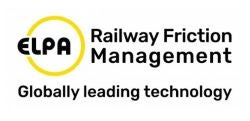The community around Gmund train station in Bavaria, Germany, was suffering from train squealing for many years. A system to prevent noise was installed some years ago with little result, so the community kept searching for a better solution.
It is a well-documented fact that many train squealing problems are best addressed as unique projects that require customized solutions. In the case of Gmund railway there was a demanding challenge of two sharp curves in a relatively steeply climbing railway. Ascending railways require sufficient traction and many friction modifiers on the market do not provide enough friction for safe railway traffic, especially in wet conditions. Flange lubricators on the other hand also run risk of being deposed on top of rail where required levels of friction can be compromised.
ELPA solved the squealing noise in Gmund with its unique two-in-one formula that works both as a top of rail friction modifier and rail gauge face lubricant. It is applied to the rail simultaneously with only one device to solve both problem of squealing and rail wear. ELPA’s two-in-one formula is at the core of its green technology protected with several patents.
The formulation is both biodegradable and environment friendly. Its prominent characteristic is its efficiency as already a small amount performs well in reducing wear and noise. In practice this means no excess deposits beside rails and on rails. This technology therefore performs outstandingly in the cities where cars and pedestrians require clean and non-slippery grounds. In Gmund it was an important feature also because the railway runs through the area with protected bodies of water.
ELPA’s system has been proving its reliability and superior performance for almost two decades. A railway operator can typically expect the investment to return in two years due to lower rail wear. The community in Gmund on the other hand now enjoys higher quality of life as perceived squealing noise has been lowered by 99%. They also report an important reduction in vibrations caused by passing trains. They can also expect, as it is customary when solving railway noise problems, their real estate will gain value considerably.

